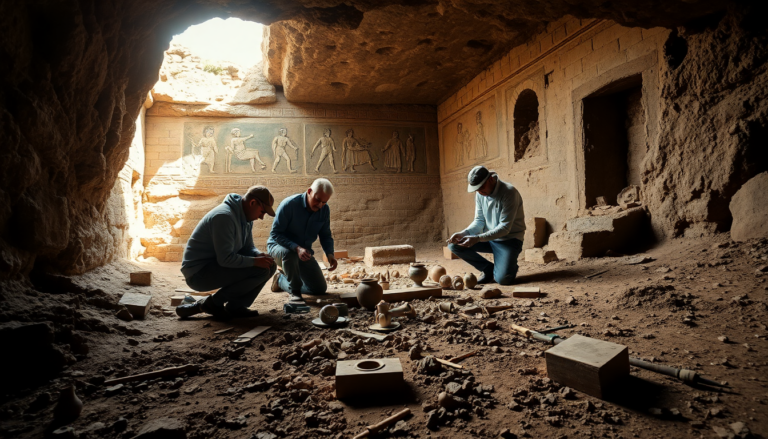In a stunning revelation, the Necropolis of Caiolo in Lazio has unveiled an intact Etruscan tomb, a true treasure trove of artifacts that offers a fascinating glimpse into a civilization long shrouded in mystery. Can you imagine the moment when archaeologists and researchers first laid eyes on this remarkable find? A wave of awe washed over them as they realized the significance of what lay before them—a chance to uncover the secrets of Etruscan culture.
The Enigmatic Etruscans
The Etruscans were a unique people who thrived in ancient Italy, long before the rise of the Roman Empire. With their own distinct language, customs, and rich culture, they left an indelible mark on the Italian peninsula, particularly in regions like Umbria, Tuscany, and, of course, Lazio. It is in this region, specifically in the archaeological area of San Giuliano at Barbarano Romano, where recent excavations have yielded extraordinary results.
The Caiolo Necropolis stands out as one of the most significant Etruscan burial sites in central Italy, housing numerous tombs, including the renowned “Tomb of the Queen,” which dates back to the 5th century BC. Yet, the real treasure unearthed during the current excavation is a tomb from the late Orientalizing period, approximately the end of the 7th century BC, which has miraculously remained untouched until now.
This discovery is more than just an archaeological achievement; it’s a window into the beliefs and practices of the Etruscans. The intact burial chamber reveals exquisitely decorated ceramic vessels in the Etrusco-Geometric style, a funerary bed, a basin, and various bronze artifacts—each whispering stories of a bygone era. Isn’t it amazing how these items can transport us back in time?
The Significance of the Discovery
As Barbara Barbaro, an archaeologist with the Superintendency, points out, “Finding an intact tomb is exceedingly rare. The exceptional nature of this discovery lies not only in its preservation but also in the insights it offers into Etruscan funerary customs and social structure.” This find is invaluable, providing a deeper understanding of how the Etruscans viewed death and the afterlife.
Looking ahead to 2024, ongoing excavations promise to reveal more than just tombs; they will enhance our understanding of the Etruscan way of life. For example, the restoration of the “Tomb of the Salamander” unveiled a remarkable piece—a red carnelian scarab engraved with the figure of an armed warrior on horseback, dating to the 4th century BC. Each new discovery adds layers to the rich tapestry of Etruscan history, inviting us to ponder what other secrets lie beneath the surface.
A Cultural Legacy
The Caiolo Necropolis is not merely a burial site; it is a vibrant testament to Etruscan civilization. Beyond the already mentioned Tomb of the Queen, the necropolis houses other fascinating structures, such as the Tomb of the Deer, the Tomb of the Beds—complete with four funerary beds designed for two adults and two children—and the Tomb of the Cuccumella.
This archaeological treasure trove results from meticulous research conducted by Baylor University of Texas, in collaboration with a consortium of Italian cultural ministries and local authorities, under the guidance of Davide Zori. The ongoing efforts to excavate and restore this site promise to unveil even more captivating stories from a civilization that continues to intrigue us.
As we delve into the Etruscan past through these discoveries, we are reminded of the intricate connections between history, culture, and identity. The stories behind these artifacts invite us to experience the Etruscan heritage, allowing us to appreciate not only the craftsmanship but also the profound beliefs that shaped their world. Are you ready to uncover the layers of this ancient civilization and explore what they can teach us today?

